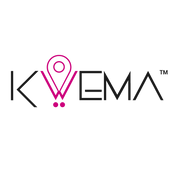Even though more and more people across the country are returning to their daily activities, it doesn’t mean that coronavirus cases have gone. Scientists around the world continue working on developing a coronavirus vaccine. As we know, COVID-19 is a new disease, which means scientists and public health experts are still learning the severity of illness it causes, how it spreads and encouraging people to still follow health recommendations.
What is a “super-spreader”?
According to Business Insider, a recent study done by a group of epidemiologists in Hong Kong found that just 20% of cases were responsible for infecting 80% of all coronavirus transmissions. Also, they found that 70% of the cases they examined didn’t pass the virus to anyone else.
This suggests that numerous people can become infected from a common source of transmission. These particular individuals who have more probability of infecting others are called “super-spreaders”. While this is not a strict term used by the scientific community, this characteristic has been present in super-spreaders events around the world due to the coronavirus pandemic.
Actually, according to WHO “super-spreaders can be incidents of transmission where a large number of people can become infected from a common source”. In addition to this, Reuters says that “super-spreaders” can be both a person and an event.
However, it is not the fault of the infected person. Certain people can release large amounts of virus from their bodies while others can spread the virus just by staying in close contact with many people due to the nature of their job or the daily activities they need to perform.
For instance, last March the CDC reported cases of infected people at a church in Arkansas. The pastor and his wife, who attended church events days before they developed coronavirus symptoms, were the sources of transmission. At least, 35 of 92 attendees acquired the virus. Unfortunately, 3 people died after the contact.
Even though they had no idea they ended up spreading it to 35 people, it would appear that there are some activities that increase chances that the virus will spread.
Where are high risk locations for “super-spreaders”?
Environment conditions, the time a person spends in a place and the disease stage in which a person is, are some factors that can become a place with higher levels of transmission risk. Some potential infection hot spots are hospitals and medical centers, cruise ships (like the Diamond Princess and Ruby Princess cases), offices, industrial facilities, fitness centers, churches and much more.
Super-spreaders can be found within facilities and workplaces, especially if they perform activities in a closed environment where people are in close contact for a long period of time. The best measure to prevent super-spreaders events at your workplace is identifying COVID-19 cases as well as any person who was in contact with them as soon as possible.
A report done by McKinsey & Company shows that a combination of Testing, Contact Tracing and Targeted Quarantine is the most effective way for controlling infectious diseases outbreaks at a low economic cost. Contact tracing allows employers to focus only on workers at higher risk of exposure and require them to be isolated.

Source: McKinsey & Company COVID-19 Facts and Insights 2020
With Kwema’s Smart Badge for Contact Tracing & Emergency Alerts, your employees follow a seamless checkpoint system to check in and check out of areas like the cafeterias, conference rooms, major hallways and entrances.
When somebody is diagnosed positive for COVID-19 using GDPR Guidelines Kwema allows you to do three key things:
- Trace WHERE the employee was.
- Identify WHO they may have come into contact with.
- Classify all employees into 3 RISK GROUPS and take action to prevent spread.

Kwema is an expert in quick adoption technology
Contact us for a Free Assessment on how likely your employees are to adopt new safety measures for COVID-19 by sending an email to: covid19@kwema.co
Watch how Kwema is disrupting workplace safety
super spreaders covid
super spreaders definition
what are super spreaders
coronavirus super spreaders
coronavirus super-spreaders
